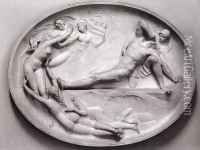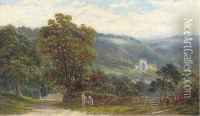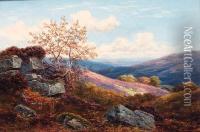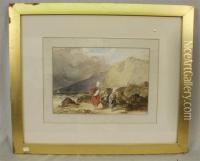Thomas Banks Paintings
Thomas Banks was a significant English sculptor of the 18th century, whose work represents a transition between neoclassicism and romanticism. Born in London in 1735, Banks emerged from relatively humble beginnings to become one of the most celebrated sculptors of his time. His artistic journey began with an apprenticeship under his father, who was a woodcarver, providing him with an early foundation in the skills of sculpture. Banks's talent and ambition pushed him to further his education at the Royal Academy of Arts in London, where he was able to refine his skills and develop his unique style.
Banks's work is characterized by its detailed execution and the emotional depth of its subjects. In 1772, his career took a significant step forward when he won the academy's gold medal for a relief sculpture, which led to further recognition and commissions. One of his most famous works, 'Shakespeare Attended by Painting and Poetry', showcases his ability to blend classical forms with a more sentimental narrative, a hallmark of his mature style. This piece, created for the actor David Garrick, exemplifies Banks's skill in portraying intricate details and his capacity for capturing the essence of his subjects.
In 1780, Banks made a bold move to Rome, which was unusual for a British artist at that time. His years in Italy were transformative, exposing him to ancient art and the works of contemporary Italian artists, which influenced his subsequent creations. Upon his return to England, he continued to receive important commissions, including works for St. George's Chapel, Windsor, and The British Museum. Despite his success, Banks remained somewhat outside the mainstream of British art, partly due to his stylistic idiosyncrasies and his focus on sculpture at a time when painting dominated the art scene.
Thomas Banks passed away in 1805, leaving behind a legacy that has been somewhat overshadowed by his contemporaries. However, his contributions to the development of neoclassical sculpture in Britain are undeniable. His works, which include monuments, portrait busts, and mythological subjects, are celebrated for their innovative approach and emotional resonance. Banks's career reflects the challenges and opportunities of an artist straddling the conventions of his time and the emerging romantic sensibilities that would come to define the early 19th century.




